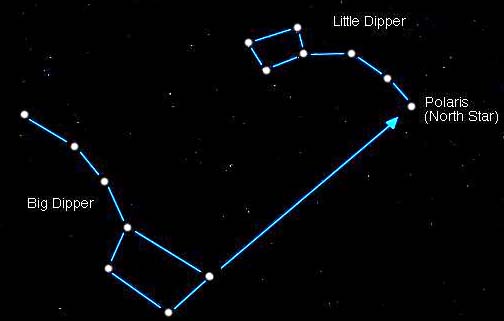 |
| Antares can appear red or yellow |
 |
| Epsilon Lyrae, the 'Double Double' |
Double stars are all over the sky. The brightest star in the night sky is Sirius B. Sirius A, a very small white dwarf, is so close to Sirius B that it makes a double star called Sirius. Sirius has a magnitude of -1.46 and can be seen in many places in the southern hemisphere.
People say Sirius is the brightest star in the night sky, but it isn't the brightest thing. The only times the moon is less bright than Sirius are during a new moon and a total lunar eclipse. The planets can also be brighter.
 |
| The Sun, merely a yellow dwarf star |
The sun is a nuclear fusion machine. Its immense weight makes its atoms so hot that their electrons are stripped from the nucleus and they go around at high speed. The positively charged atoms then crash into other atoms. When a heavy form of hydrogen, Deuterium, crashes into a heavier form of hydrogen, Tritium, It yields a Helium nucleus. The Helium is unstable, so it splits into one stable helium atom and one neutron. This process creates heat and light.
In this way, the sun is constantly converting hydrogen into helium. The helium is heavier than hydrogen, so helium is always accumulating in the core of the sun. In a few billion years, the sun's core will be heavy enough to start converting helium into heavier elements. You should be thankful it hasn't started doing that yet, because it will expand into a red giant and swallow up Mercury and Venus.
After that it will fuse heavier and heavier elements until Iron, the heaviest element that can be produced by nuclear fusion. Then It will explode, creating a Supernova. Luckily all of this will happen after all life on Earth is extinct.
That happens to every star. They get formed in a nebula, where another star has exploded, then they form heavier and heavier elements, explode, and form a nebula that gives birth to new stars.
The night sky- star charts, constellations, and shapes- is our view of the visible cosmos. It has been helpful. In the old library of Alexandria sat the famous star charts of Ptolemy that has guided sailors for years.
Ptolemy was an astronomer and mathematician. In his star charts he included for each star latitude, longitude, hemisphere, and part of the sky.
 | ||||||
| The calendar. There used to be only 360 days in a year, because there are 360 degrees in a circle. |
We picture the sky as a sphere around the earth, but this idea was around for a long time. Before the Renaissance people thought the earth was the center of everything, and that the Universe was created just for them. They thought of the night sky as a crystal sphere, with nothing outside it. This thought probably led to the making of celestial globes, as they are the sky, seen as a sphere.
There is a problem with celestial globes. In the real sky, we see it from the inside, but in a globe, the user sees it from the outside. If the manufacturer chooses to put the stars on their real positions on the globe, the globe will look backwards compared to the sky. One way to solve this problem is to have the globe backwards. Another way is to make the globe transparent so that the user looks through it, just like we look through the imaginary giant celestial globe from earth.
There are ways to find both the north celestial pole and the south celestial pole. To find out the south, you find the southern cross, or Crux Australis. Then you extend it by three or four times. That point is the south celestial pole.
 |
| Finding Polaris |
There are thousands of stars you can see through binoculars, many constellations, many wonders of the sky. From Barnard's loop, which takes up most of Orion, to the Hubble deep field, a tiny spot of sky where the Hubble Space telescope found thousands of very young galaxies, there is an uncountable number of things you can find by looking at a clear sky with a telescope or binoculars.
No comments:
Post a Comment